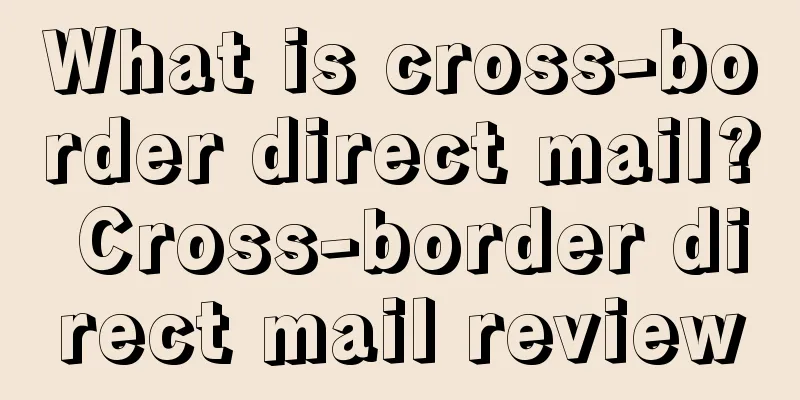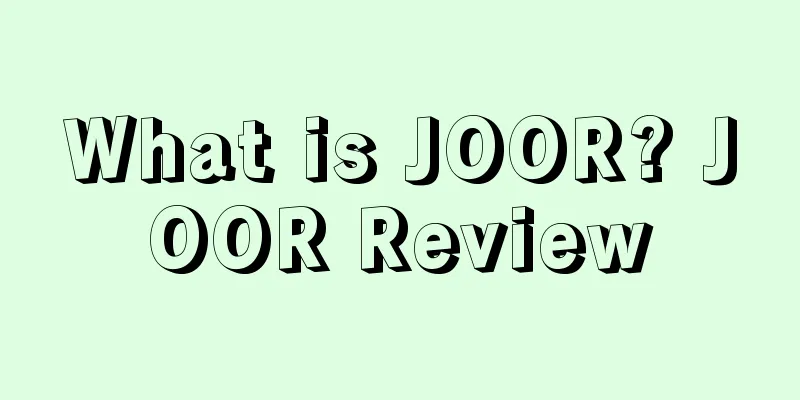What is cross-border direct mail? Cross-border direct mail review

The cross-border e-commerce bonded direct mail model started in 2013. China started cross-border e-commerce services in eight pilot cities across the country, mainly relying on the cooperation between China Customs and Post Office to establish a free trade zone. Merchants prepare goods in bonded warehouses in advance. After consumers place orders, they are sorted into small packages and shipped as personal items. Only the postal tax needs to be paid, which greatly reduces the tax on imports for enterprises. Start time 2013 Basic IntroductionCross-border direct mail means that personal items often need to be transferred for customs clearance. The address you fill in is a foreign address, and then the foreign transfer company packs and labels them. Overseas direct mail means that when you place an order, you directly provide your delivery address. It is a direct shipment and the entire logistics process can be tracked. This model is more suitable for customers who make larger one-time purchases. The overseas direct mail model is divided into small package direct mail and collection model according to whether the goods are collected. The small package model is that cross-border e-commerce directly purchases goods from overseas supply chains and ships them to domestic customs through international logistics, and finally reaches consumers; The cargo collection model is that cross-border e-commerce companies centralize orders through overseas warehouses for purchase, and then use international logistics to arrive at the domestic customs for clearance. Common direct mail methods1. Personal Express In principle, it is the items that are sent by individuals abroad to individuals in China for their own use, so these items do not need to be registered and will not be subject to the control of the positive detailed list. This is the characteristic of personal express delivery. This also leads to a relatively high tax rate for personal express delivery, with three tax rates of 15%, 30%, and 60% depending on the type of goods. Even with a 50 yuan tax-free credit limit, the overall comparison is still much higher than the comprehensive tax of cross-border e-commerce. 2. BC Direct Mail BC direct mail, also known as bonded area direct mail, is a method recommended by the country. It is relatively efficient and stable, and is legal and compliant. But the disadvantage is that each order must pay taxes, must be well filed, and is subject to the constraints of the reverse details. 3. EMS direct mail The advantage of EMS direct mail is that it is relatively fast and stable. For cross-border e-commerce, except for sampling tax, it is generally tax-free. Therefore, its disadvantage is also obvious, that is, the price is relatively high. 4. CC direct mail The CC direct mail model refers to personal parcels and express mail, which originally complies with the principle of reasonable personal use, so as to facilitate the delivery of personal items within the country. For example, in daily life, Chinese people often send books, clothes and small gifts from overseas to China through post offices or local express companies. Or they buy small things for relatives and friends in China and send them back. Generally, most people use this method. Advantages and disadvantages of cross-border direct mail modelAdvantages: No need for transshipment, short time; transparent logistics tracking; no commodity inspection required Disadvantages: A collection point is required overseas; orders must be generated domestically Customs processingOverseas direct mail is divided into three categories at the customs according to the actual situation: items 1, 2, and 3. Items 1 and 2 are personal items. If the value of the items is less than 1,000 yuan, they are tax-free. If the value exceeds 1,000 yuan, the import tax will be levied at 20%. If it is determined to be item 3, that is, trade items (commercial trade entry), it will be subject to 17% value-added tax and tariffs ranging from 0-10%. References |
>>: What is Dsm Tool? Dsm Tool Review
Recommend
What is 4PX? 4PX Review
4PX EXPRESS is a professional international expres...
28 essential Amazon operating knowledge and common problem response strategies
1. Category review entrance : Backstage homepage -...
What is GST? GST Review
Goods and Services Tax (GST) refers to a tax of 10...
What is Vente-Privée? Vente-Privée Review
Vente-Privée was founded in France in 2001. It is ...
Amazon's "fake orders" changed my life! The sad story of a boss with annual sales of hundreds of millions becoming a snack stand owner
When I arrived at the company this morning, I foun...
What is SUNRATE? Review of SUNRATE
Founded in 2016 , SUNRATE is committed to providin...
What is Dash Button? Dash Button Review
Dash Button is a tool launched by Amazon on March ...
The most difficult video verification in history has occurred, and many sellers have been affected!
Normal, once there is data abnormality, such as s...
What is PanPay? PanPay Review
PanPay is a comprehensive financial technology com...
What is Hongchou E-commerce? Hongchou E-commerce Review
Shanghai Hongchou E-commerce Co., Ltd. is committe...
Amazon is testing a new advertising method! These big brands have already started using it
Cross-border Business School Information and skil...
No chance of Black Friday! US site BS sellers suffered a massive attack, and a large number of links cannot be sold!
▶ Video account attention cross-border navigation ...
Facebook Ads Beginner's Guide: Learn about Facebook Ads Reach Objectives in One Article
Want your Facebook ads to be shown to your target ...
Get the latest and most comprehensive practical experience and skills for Amazon's high-quality reviews!
Competition in the Amazon market is increasingly f...
Breaking news! Amazon's ID scanning system has been "upgraded", hundreds of accounts have been suddenly deactivated!
Since 2024, the changes on the Amazon platform hav...









